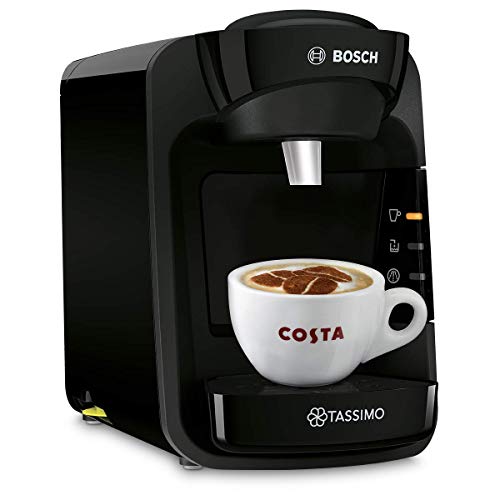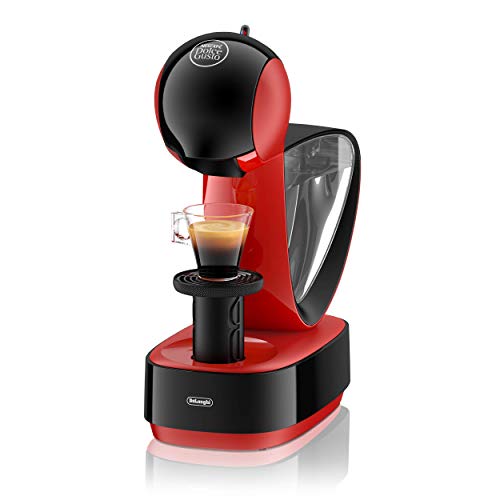Five Killer Quora Answers To Pod-Making Machines
Detergent Pod-Making Machines
 There are many different pod machines available, from K-Cup (r) and Tassimo ™ to Nespresso ™ or Senseo(tm). All pod coffee capsule machine machines work in the same way, heating water and pressing buttons.
There are many different pod machines available, from K-Cup (r) and Tassimo ™ to Nespresso ™ or Senseo(tm). All pod coffee capsule machine machines work in the same way, heating water and pressing buttons.
The process of making pods is more complex however, it is still simple enough to do yourself. Here are some things to look for when you buy a pod-making equipment:
Detergent pod capsule coffee machine Manufacturing
Detergent pods are practical efficient, effective, and green. But how do they get them? The process is actually quite simple. A single-dose capsule is filled with a dissolvable, water-soluble film. The film is usually made of polyvinyl ether, which dissolves in water and does not leave any residue on clothing. A few additional ingredients go into the formula for detergent such as chelating agents to soften hard water and lessen detergent degradation optical brighteners that enhance the look of whites and also fragrances or other additives for pleasant scents.
The sachets are then sealed to protect the contents from contamination and moisture while in storage, transit, and during use. Laundry pod makers employ advanced production techniques to meet the demand. They can produce between 600 and 240 pods per minute. This ensures that the product is delivered according to deadlines.
Tide manufactures a portion of these pods. The company uses high-quality, U.S-made ingredients, and does not import cheap substitutes. It also takes steps in order to trace and verify raw materials.
A laundry pod making machine has a product hopper which stores liquid detergent before it’s used. A precise dispenser then fills each pod with the exact amount of detergent. Finally, the machine heat-seals each pod. The patented design of the machine safeguards the film that is water-soluble, while routine inspections ensure 0.02ml precision.
In addition to PVA The pod films also contain other ingredients that help them fend away liquids and give them other properties, like tasting terrible. For instance, MonoSol uses Bitrex, an ammonium quaternary compound that is known as denatonium. The chemical is so bitter, it can repel people at levels as low as 0.01 percent. It can also discourage children and pets from putting the sachets in their mouths.
When you’re not using your laundry pods, put them in storage and keep them away from the away from children and pets. Away from light and moisture prevents the ingredients from degrading quickly while ensuring proper storage conditions can prolong the life of the detergent in the pod. Additionally, it is important to be sure to properly dispose of laundry pods after use.
Detergent Packaging of Pods
Detergent pods are a craze and are gaining market share in laundry and dishwasher detergents, as well as personal care products like shampoo. They are a concentrated mix of surfactants and other cleaning ingredients that are encapsulated within a water-soluble film. They are convenient to use, easy to store, and are a safer alternative to liquid detergents.
Unlike traditional detergent containers, made of PET plastic and can contain dangerous chemicals such as 1,4-dioxane, pods are an array of harsh chemicals enclosed by a layer of polyvinyl alcohol. The chemicals used in these containers can differ based on the brand. They could include bleaches and surfactants aswell in optical brighteners, solvents or enzymes. These ingredients are available on the websites of the manufacturers.
The PVA used in the film to encase the pods is biodegradable, and is listed on the Environmental Protection Agency’s CleanGredients database. It also has the Nordic Swan Eco-label, which is among the most rigorous independent ecolabels. The EPA notes it can be broken into natural, simple compounds found in soil and wastewater plants.
Laundry pods are an extremely popular alternative to liquid detergents, and a variety of brands offer an array of options, ranging including basic laundry detergents to stain removers and fabric softeners. In the US they comprise 15 percent of household detergent sales according to a study by Nohbo.
Most pods consist of a single dose of laundry detergent but some include additional ingredients like fabric softeners, scent boosters and stain removers. Some manufacturers also include anti-bacterial properties to the detergent to combat bacteria.
Some people have complained about the fact that laundry pods don’t disintegrate completely, despite their convenience. This is usually the case if you overfill the tub with water or use water that is extremely cold or you introduce the pods too early in the cycle. It could also occur when a consumer does not take the time to read the instructions thoroughly because the pods require an appropriate temperature and water pressure to dissolve properly.
The pods aren’t toys. Therefore, users should keep them out of reach of children. Ensure they are stored in a secure place for storage. They should also be empty before being placed in the dishwasher or washing machine. Recycling the packaging as quickly as it is possible will help to reduce waste and prevent pollution.
Detergent Filling Pods
Laundry pods are rapidly replacing liquid detergents that are traditionally available in the household cleaning market. The adorable little packets are convenient, simple to use and don’t require any measuring. They are also available in a variety of sizes and strengths. Based on the needs of your laundry you can pick from single-dose laundry detergent pods, multi-compartment pods, or even powder detergent pods.
The thin film that encapsulates pods is crucial to their success. It must be able to hold solids and liquids that are chemically active and yet maintain its shape. But, it must also be able to completely dissolve and quickly in cold water. Many companies have opted for a polymer called PVA that offers both of these properties. The rest of the pod consists of powerful detergents, bleaches and solvents. It also has optical brighteners, preservatives, enzymes and preservatives. Typically, manufacturers list their detergents’ ingredients.
Contrary to powder and liquid detergents, which are packed in high-density plastic pods are made of plant-based polymers that can be broken down by microbes living in the ocean or soil. Researchers at the Woods Hole Oceanographic Institution claim that PVA can be degraded in less than 70 days in sewage and sludge. This is a lot faster than conventional detergents which can take hundreds of years to break down.
Although laundry pods have revolutionized laundry, they are not without their flaws. For one thing, they’re more expensive than liquid and powder detergents. If you accidentally spill the pod, you’ll be confronted by a unpleasant taste as well as burning chemically.
Another disadvantage is that they’re not as versatile as traditional detergents. The laundry pods are restricted to the wash cycle listed on the packaging. This can be an issue for front-loading or top-loading washing machines with automatic fabric softener and detergent dispensers. If your machine is equipped with an agitator, the pods might not dissolve correctly.
If you’re interested in experimenting with laundry pods, ask an area laundromat about the best option for your machine and your clothes. Always read the instructions. If your clothes are streaked or spotted after washing them with a pod, immediately wash them without adding any more detergent. Never place detergent-stained clothes into dryers because the heat will make the stains harder to remove later.
Detergent pod coffee machines Inspection
Laundry detergent pods are popular because they dissolve quickly and effectively in hot water and remove the stains from all fabrics. However they aren’t without controversy. Many activists refer to them as plastic and they are a rising source of marine debris and litter. Although it is true that polyvinyl and PVOH that are used to create the pods, are derived from oil, the producers claim that these plastics do not pose the same threat as other types because they biodegrade when placed in water.
Since they were first introduced in 2012, they’ve gained popularity and represent more than one-third of the nation’s liquid detergent sales. Many major brands now sell the sachets, which are comparable in size to an ice cube, and come in a variety of colors and scents. The pods, marketed as eco friendly are the result of the high concentration of detergent in a pre-determined amount. According to the Cleaning Institute, which represents major multinationals like Procter and Gamble, this results in smaller packaging and weight, and a lower emission from shipping. The manufacturer also claims that the pods’ plant starches and other natural materials help to make them water-soluble and they can be biodegraded in a short period of time in water treatment plants.
The pods can still be dangerous if handled incorrectly, despite all the hype. The thin membranes that hold the detergent can break open easily and cause irritation to the eyes or skin, and if ingested by large amounts, they could cause chemical poisoning. The outer packaging that is designed to keep children away from the pods could also break at the zipper track. Consumer Reports asked manufacturers to make pods safer in September 2012 by changing the transparent containers to opaque ones and adding child-resistant locks. Many manufacturers responded, and some added additional safety warnings.
 To avoid any problems, keep the pods away from children, seniors, and pets. Store them high up or secured to stop children from assuming they are candy, and be sure that the detergent you choose to use is compatible with the type of washer you use. Be aware that water that is cold especially when it is below 60 degrees Fahrenheit, may not dissolve the pods and cause your machine to get blocked or leave a residue on your fabric.
To avoid any problems, keep the pods away from children, seniors, and pets. Store them high up or secured to stop children from assuming they are candy, and be sure that the detergent you choose to use is compatible with the type of washer you use. Be aware that water that is cold especially when it is below 60 degrees Fahrenheit, may not dissolve the pods and cause your machine to get blocked or leave a residue on your fabric.

Leave a Reply